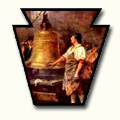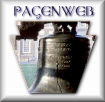| |
Page 564
HISTORY OF CLEARFIELD COUNTY.
ain came from Philipsburgh and preached the Word to the people at Penfield.
Since then the line of ministerial succession, with but few exceptions, has been
unbroken. To these two honored names should be added those who have successively
preached at Penfield down to the present time, namely : Revs. Burlingame,
Jackson, Bowen, Hallock, Waring, Goodell, Riglesworth, Caruthers, Benn, Shafer,
Hockenberry, Wirtz, Holland, Patterson, Fulton, Berry, J. L. Chandler, A. S.
Chandler, Ash, J. R. King, Hooven, Heck, Chilcoat, and McCloskey. Revs. F. E.
Hewitt and Thomas Hewitt also preached for years as local preachers. Rev. A. B.
Hooven has twice served the charge, in 1869-71 and 1878-80.
During the pastorate of L. G. Heck, in 1872-4 a
church edifice was built at Penfield, but unfortunately the society made their
plans too extensive, and were not able to carry them out. It should be said that
this is the exception with the Methodist Episcopal Church at large, as they are
building and paying for two churches every day of the year.
The panic, with its pressing influence, increased
the financial difficulties of the Methodist Society at Penfield ; but E. M.
Chilcoat came on the circuit, and there occurred in the new church a great
revival, which wonderfully strengthened Methodism and also Presbyterianism in
Penfield. During Rev. Chilcoat's pastorate the Caledonia circuit was divided
into two charges named the Penfield and Benezett circuits, respectively. The
church thus made strong by the revival, attempted to pay the church debt, but in
spite of all the building was sold during the pastorate of A. B. Hooven, and
passed into the hands of 0. Dodge, to whom $1,100 was due. In addition to this
sum, J. H. Kooker held a claim, which, though not strictly legal, the society
felt bound in honor to pay. After the sale of the church, pastor and people set
to work to redeem it, and before Mr. Hooven left $500 was paid to Mr. Dodge.
During the term of A. D. McCloskey the remainder of Mr. Dodge's claim had been
paid, and Mr. Kooker, having canceled half of his claim, has received the
remainder, save a small sum assumed by the Ladies' Aid Society. The church
edifice is a two- story building with a cupola, having within it a fine bell,
weighing eight hundred pounds, a lecture-room and two class-rooms below, and an
auditorium above. The present membership is one hundred and forty, and a Sunday-
school in connection of about one hundred members. L. M. Brady is the present
pastor. The charter of incorporation for the Penfield Church was secured in
November, 1882.
Penfield circuit embraces five appointments : Webbs,
in Elk county, and Mill Run, Penfield, Winterburn, and Hickory, in Huston,
Clearfield county, Rev. E. M. Chilcoat was the first minister who preached in
the town of Winterburn, the services being held in a barn.
Presbyterian Church.—The Presbyterian church at
Penfield was organized September 3, 1872, with twelve members. The church
edifice was erected in
|
|






